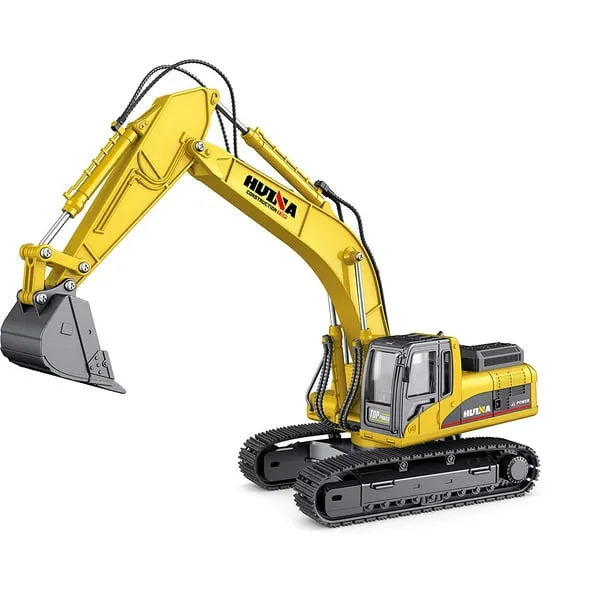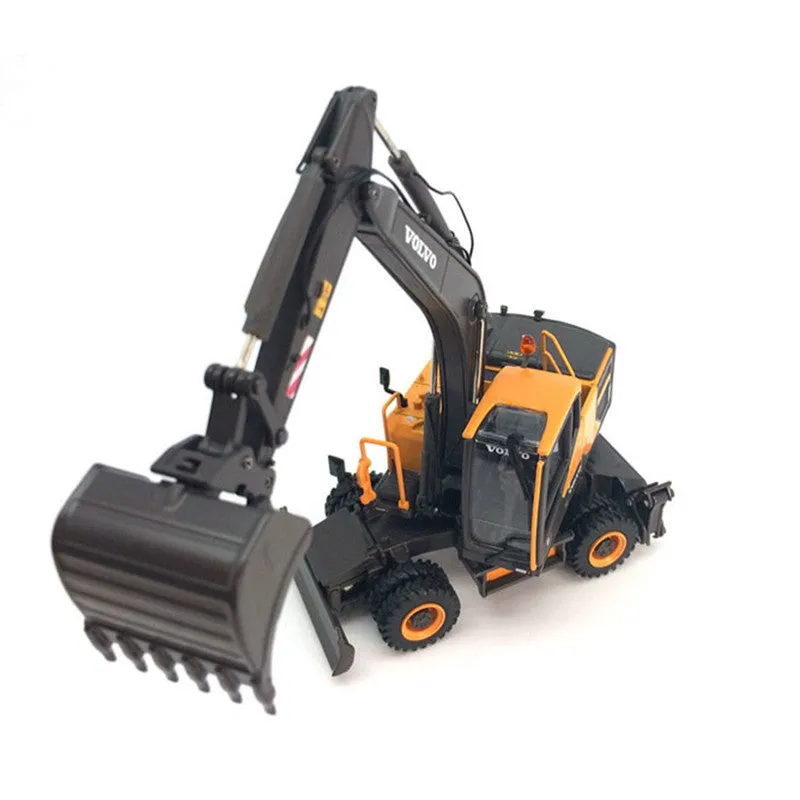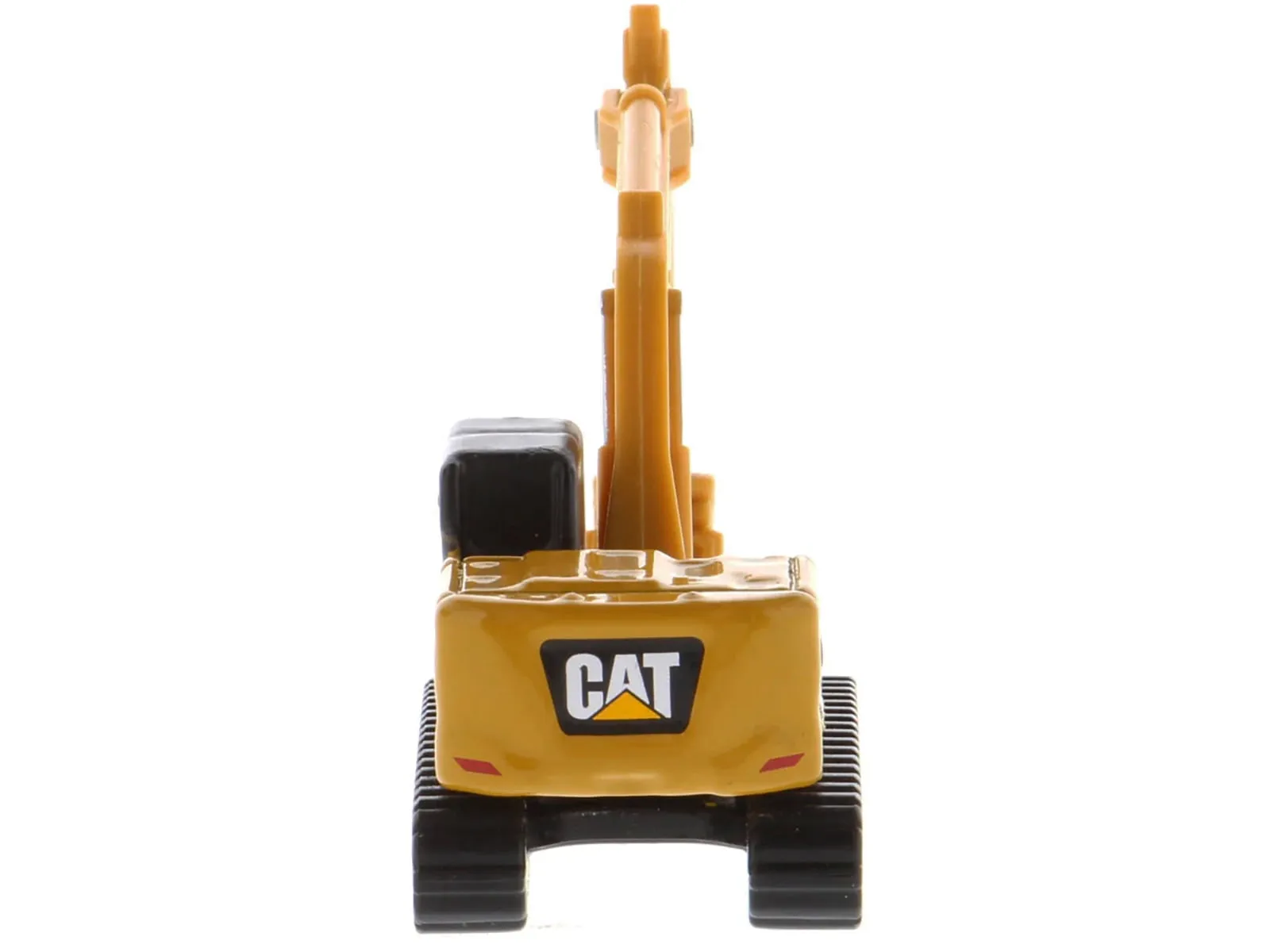What are Excavator Attachments
Excavator attachments are specialized tools designed to be mounted on excavators, enhancing their versatility and allowing them to perform a wide range of tasks beyond simple digging. These attachments transform the excavator into a multi-functional machine, capable of handling everything from demolition and material handling to specialized construction and landscaping projects. They connect to the excavator’s arm, utilizing the machine’s hydraulic system to provide power and control. The diversity of attachments available is vast, catering to different needs and materials. For diecast model enthusiasts, these attachments are equally important, offering a way to replicate the realism and functionality of the full-sized machines. The selection of attachments is important for model collectors. Excavator attachments, in both real-world and diecast form, are crucial for efficiency and adaptability.
Buckets
Buckets are perhaps the most fundamental and widely used excavator attachments. They come in various shapes and sizes, each designed for specific tasks, from digging trenches to loading materials. Their primary function is to scoop, lift, and transport materials like soil, gravel, and debris. The bucket’s design, including its teeth and shape, significantly impacts its performance. Different bucket designs, such as general-purpose buckets, heavy-duty buckets, and rock buckets, are available to handle various materials and ground conditions. For diecast models, buckets are often highly detailed, accurately replicating the real-world counterparts and enhancing the model’s realism and play value. The bucket is essential for diecast model excavator versatility and functionality. Many diecast models also offer interchangeable buckets, allowing for different operational scenarios to be simulated.
Types of Buckets

Several specialized bucket types enhance an excavator’s capabilities. Grading buckets feature a wide, flat design, making them perfect for leveling surfaces and fine grading. They are ideal for creating smooth finishes and precise ground preparations. Rock buckets have reinforced construction and teeth, suitable for breaking up and handling tough materials like rocks and concrete. They are built to withstand the immense forces involved in these tasks. V-shaped buckets are designed for trenching, allowing for the creation of narrow and deep trenches efficiently. Their shape is perfect for digging utility lines or drainage systems. Each bucket type, including those available for diecast models, provides a unique function, enabling the excavator to perform a wider range of operations and increasing the machines overall effectiveness. Proper selection of the right bucket depends on the task at hand.
Hydraulic Hammers
Hydraulic hammers, also known as breakers, are powerful attachments designed for demolition and breaking up hard materials. They are used to break concrete, rock, and asphalt. The hammer delivers repeated blows to the material, shattering it efficiently. These tools are essential on construction sites for tasks such as removing building foundations, breaking up pavement, and preparing sites for new construction. The power and precision of hydraulic hammers make them indispensable tools for demolition projects. Diecast models often feature detailed hydraulic hammers, allowing enthusiasts to replicate demolition scenarios with accuracy and adding another layer of realism to their model collections. These hammers significantly increase the versatility of both full-sized excavators and their diecast counterparts.
How Hydraulic Hammers Work
Hydraulic hammers operate using a combination of hydraulic pressure and impact force. The excavator’s hydraulic system provides the power to drive a piston within the hammer, which then strikes a chisel or other tool against the material being broken. The frequency and force of the blows can be adjusted depending on the material and task. This allows operators to efficiently break apart concrete, rocks, and other tough materials. The design includes a robust housing and a strong tool bit, made to withstand immense pressure and impact. Advanced hydraulic hammer systems often include features like anti-vibration technology and automatic lubrication systems, improving their efficiency and longevity. These tools offer a controlled and precise method of demolition, minimizing damage to surrounding structures. For diecast models, the functioning of the hydraulic hammer adds a level of realism.
Augers

Augers are attachments used for drilling holes in the ground. They are commonly used in construction, landscaping, and utility work to create holes for posts, pilings, and other structures. The auger consists of a rotating helical screw that bores into the ground, removing soil and debris as it drills. Augers come in different sizes and designs to accommodate various hole diameters and ground conditions. They are vital for tasks like installing fence posts, planting trees, and preparing sites for foundations. The versatility of augers makes them an important attachment. Diecast model augers are also featured with similar designs, enabling model enthusiasts to realistically simulate drilling operations. These attachments are great for model collectors.
Applications of Augers
Augers are versatile tools used across many industries. In construction, augers are used to drill holes for foundations, pilings, and utility poles. In landscaping, they are employed for planting trees, installing fences, and creating irrigation systems. Utility companies use augers for setting power poles and laying underground cables. The ability to drill precise and consistent holes makes augers indispensable for various tasks. The size of the auger can be customized. The efficiency and accuracy of augers make them popular for projects. Diecast models of augers allow collectors to recreate a wide variety of construction scenarios. They are highly functional tools that can drill through various surfaces, making them suitable for many different applications. The use of augers, both real and in diecast form, helps in completing construction tasks.
Grapples
Grapples are used for grabbing and handling various materials, such as logs, debris, and scrap metal. They are designed with jaws or arms that can open and close, allowing them to securely grasp and lift irregular-shaped objects. Grapples are widely used in forestry, demolition, and recycling industries. They are very useful for tasks involving the sorting and moving of materials. The grapple’s design allows it to securely hold materials. Different types of grapples are available. Diecast model grapples are often detailed, replicating the functionality of real-world grapples and enhancing the versatility of the models. The grapple is a versatile tool, providing great functionality.
Types of Grapples

A wide range of grapple types are available, each optimized for specific tasks and materials. Log grapples are designed with robust jaws and gripping mechanisms to securely handle logs and timber, commonly used in forestry operations. Scrap grapples, often featuring multiple tines or claws, are built for handling scrap metal, demolition debris, and other irregular materials. These grapples are made to withstand the harsh conditions. Demolition grapples usually have a combination of teeth and a clamshell design, and they are perfect for efficiently sorting and handling debris on demolition sites. Each grapple type offers a unique set of features. Diecast models of grapples accurately represent these different designs, allowing model enthusiasts to simulate specialized material handling operations. Choosing the correct grapple type increases efficiency.
Crushers
Crushers are excavator attachments designed to break down large materials into smaller pieces. These tools are used in demolition, recycling, and construction to process concrete, asphalt, and other materials. They consist of powerful jaws or crushing mechanisms that can exert significant force, breaking down large objects into manageable sizes. Crushers are effective for on-site recycling, reducing the volume of waste and allowing materials to be reused. The efficiency of crushers, both in real-world and diecast model applications, allows for on-site processing, decreasing waste. Diecast model crushers allow enthusiasts to recreate crushing operations and add realism to the models. These types of attachments are versatile tools. Crushers help minimize waste.
Crusher Applications
Crushers have several applications in many different industries. In demolition, crushers are used to break up concrete structures. This helps with the processing of the materials on-site. Recycling plants use crushers to reduce the size of construction and demolition debris, preparing it for recycling. The crushed materials can be used for new construction projects. The use of crushers leads to cost savings and environmental benefits. The ability to recycle waste materials on-site saves resources and reduces the need for landfill disposal. Crushers are useful attachments that greatly contribute to sustainable construction practices. Diecast models of crushers provide model enthusiasts the opportunity to replicate these operations. These operations include realistic construction scenarios.
Rippers

Rippers are robust excavator attachments used to break up hard ground, rocks, and asphalt. They consist of a single, heavy-duty tooth or multiple teeth that penetrate and fracture the material. Rippers are essential for preparing sites for excavation, road construction, and other projects involving tough ground conditions. They provide a powerful way to loosen and break up difficult materials. They come in different configurations. Diecast model rippers are designed to realistically replicate these functions. The ripper is very functional in construction sites.
How Rippers are Used
Rippers are used by applying the excavator’s power to push the ripper tooth into the material, breaking it up through a combination of force and leverage. This allows for the efficient excavation of otherwise difficult materials. The operator controls the depth and angle of the ripper. Rippers are used for loosening rocky soil and breaking up asphalt. The process allows for easier excavation with other attachments, such as buckets. The use of a ripper reduces the effort needed to break up the hard ground. Diecast models of rippers allow enthusiasts to replicate these operations in their model scenarios. Rippers are used extensively to prepare a construction site. Using a ripper improves the excavation process.
Tilt Rotators
Tilt rotators are advanced excavator attachments that offer a combination of tilting and rotating capabilities. They are installed between the excavator arm and the attachment, allowing for precise positioning and control of the attached tool. Tilt rotators significantly increase the versatility of an excavator. They make it possible to reach difficult spots. The tilt and rotation functions allow for a wide range of operations. The ability to position tools at different angles helps in challenging areas. Diecast model tilt rotators provide a way to replicate this increased functionality. The tilt rotator greatly improves the efficiency of excavator operations.
Benefits of Tilt Rotators

Tilt rotators offer several benefits. The tilt function allows the excavator to work on slopes or uneven ground. The rotation function increases the excavator’s flexibility. Tilt rotators can access hard-to-reach locations. This reduces the need for repositioning the excavator and improves efficiency. Tilt rotators also improve precision. They are great for tasks like grading, trenching, and demolition. Tilt rotators significantly increase the versatility of excavators. Diecast models of tilt rotators provide collectors a chance to show off these advanced features. Tilt rotators enhance the ability of an excavator to perform many tasks.
Conclusion
Excavator attachments greatly enhance the capabilities of excavators, transforming them into versatile tools for various construction, demolition, and landscaping tasks. Buckets, hydraulic hammers, augers, grapples, crushers, rippers, and tilt rotators are just some of the attachments available. Each one is designed for specific tasks and materials. The range of attachments ensures that excavators can be used for many tasks. Diecast model enthusiasts also appreciate these attachments, as they enhance the realism and functionality of their models. Whether in the real world or in the world of diecast models, these attachments are essential for efficient and effective operation. Understanding the different types of excavator attachments and their functions enables the right tool selection. Choosing the right tool for the job ensures optimal performance.
